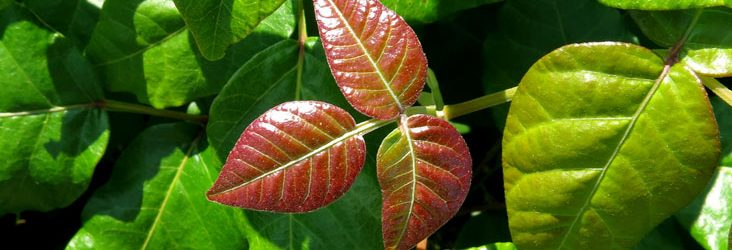Prevention & Treatment of Poison Ivy: What to Do When Your Tween Contracts This Itchy Rash

The substance that causes a poison ivy rash is called urushiol, which is a clear oil that seeps from the plant. This same substance is also responsible for the rash reaction in poison sumac and poison oak. No one likes to have poison ivy. It is itchy, ugly, and can spread like crazy, if you don’t take care of it right away. For tweens who are allergic to the plant, it can become a real nightmare.
Poison Ivy Prevention
The best way to handle poison ivy is to avoid it all costs. To do this, you need to know what the plants look like. There are a few pictures shown below for you to get a good look at the different presentations of poison ivy.
If you identify the plants anywhere in your yard make arrangements with a professional to have the plants removed. If this is not feasible, make sure your child knows the boundaries of the plants to avoid going near them. Simply brushing up against a plant can cause an outbreak, as well as tearing the leaf by accident. It is not advisable to try and remove the plants yourself, as contracting poison ivy is easy to do, unless you have experience with such removal.
Treatment of Poison Ivy
If you know that your tween has been in contact with poison ivy within the first 10 minutes of the interaction, wash the exposed areas with soap and water immediately. Do not give your child a bath, as the oil can spread in the bath water and contaminate other parts of his body quickly. Instead, use a wash cloth just to the affected areas, and then throw the wash cloth in the garbage can outside right away.
Treating poison ivy depends on the severity of the rash. For a minor outbreak hydrocortisone cream or calamine lotion can be just the trick. For more severe cases an antihistamine (such as Benadryl) is often prescribed, and even steroids for really severe cases where the skin is inflamed and irritated. A cool shower is also recommended, as hot water can irritate the rash.
A typical poison ivy rash lasts approximately two to three weeks. All treatments are aimed at soothing the symptoms the rash causes, but will not keep it from happening again. Prevention is the best way to keep poison ivy from returning.
Complications of Poison Ivy
Scratching can make poison ivy worse. This can cause a secondary bacterial infection, especially if fingernails are dirty. An antibiotic is usually prescribed to treat this bacterial infection.
Poison ivy is highly contagious. It is important for your tween to avoid physical contact with anyone until the blisters have healed and are no longer oozing liquid. Check with your child’s doctor to know exactly when he is no longer contagious.
If your tween develops a fever at any time during an outbreak, take him to the doctor’s office as soon as possible. This can be a sign of a more serious infection, and may require prescription drugs to treat properly.
Note: This article is not intended to be professional medical advice. Only your doctor can really know what is the best treatment of poison ivy for your child. Always consult your doctor when your tween has any type of rash.